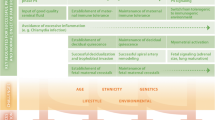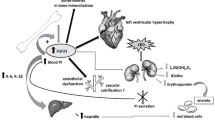Summary
To explore the relationship between Insulin-like growth factor (IGF)-I, −II and lung development in neonatal rats. 80 timed pregnant Sprague-Dawley (SD) rats were randomly divided into 4 groups (n=20): group A (Control group), group B (Dexamethasone (DEX) 1 group), group C (DEX 2 group), group D (retinoic acid (RA) group). 20 pregnant rats in group A, B and D were injected subcutaneously or intraperitoneally with vehicle (NS), DEX, or RA respectively during gestational day 16 to 18. All newborn rats in group C were subcutaneously injected with DEX at day 1 to 3 after birth. The lung tissue was obtained at the following times: fetuses at gestational ages of 18, 20 and 21 days, and 1, 3, 5, 7, 10, 14 and 21 days after birth. Lung tissues were used for histopathological study, the polypeptides analysis of IGF-I, −II (immunohistochemistry and Western blot) and mRNA analysis (RT-PCR). The results showed that the strongest expression of IGF-I in group A and D occurred at ages of 5–7 days (alveolar stage). The stronger their expressions, the better the alveolar develop. The peak stage of expression in group B occurred earlier, on the day 3 after birth. Compared with group A, the expression of IGF-I during gestation age of 18 days to age of 3 days in group B were significantly higher (P<0.01), but significantly lower at other time points (P<0.01). The expression of IGF-I was lower in group C all the time and always higher in group D than those in group A (P<0.01). The peak expression of IGF-II took place at the gestation age of 18 days, then gradually dropped to trace. During 18 days of gestation to age of 3 days, the expression IGF-II in group B was significantly higher than that in group A (P<0.01). No difference was found among all other groups. The change in the expression of IGF-I, −II mRNA in all 4 groups was similar to that of their polypeptides. The results suggested that there is a close linking between IGF-I, −II and lung development in newborns. The IGF-II works at early stage and the that of IGF-I works at the stage of new septa formation and alveoli maturation. The stronger their expressions, the more mature the lung development.
Similar content being viewed by others
References
Editorial, Introduction: pre-and postnatal lung development, maturation, and plasticity. Am J Physiol Lung Cell Mol Physiol, 2002, 282: L341
Wallen L D, Myint W, Shimasaki Ket al. Cellular distribution of insulin-like growth factor binding protein mRNAs and peptides during rat lung development. Endocrinology, 1997, 155: 313
Chang L W, Rong Z H, Zhang Q S. Effect of retinoic acid on lung injury in hyperoxia-exposed newborn rats. J Huazhong Univ Sci Technolog Med Sci, 2003, 23(1): 71
Oue T, Taira Y, Miyazaki Eet al. Effect of antenatal glucocorticoid administration of insulin-like growth factor I and II levels in hypoplastic lung nitrofen-induced congenital diaphragmatic hernia in rats. Pediatr Surg Int, 1999, 15(3–4): 175
Wallen L D, Han V K. Spatial and temporal distribution of insulin-like growth factors I and II during development of rat lung. Am J Physiol, 1994, 267 (5 Pt 1): L531
Mauceri H J, Becker K B, Conway S. The influence of ethanol exposure on insulin-like growth factor (IGF) type II receptors in fetal rat tissues. Life Sci. 1996, 59 (1): 51.
Luyet C, Burri P H, Schittny J C. Suppression of cell proliferation and programmed cell death by dexamethasone during postnatal lung development. Am J Physiol Lung Cell Mol Physiol, 2002,282:L477
Bloomfield F H, Knight D B, Breier B Het al. Growth restriction in dexamethasone-treated preterm infants may be mediated by reduced IGF-I and IGFBP-3 plasma concentrations. Clin Endocrinol (Oxf), 20001, 54(2): 235
Massaro G D, Massaro D. Postnatal treatment with retinoic acid increases the number of pulmonary alveoli in rats. Am J Physiol, 1996, 270 (2 Pt 1): L305
Author information
Authors and Affiliations
Additional information
LIU Hanchu, male, born in 1959, Professor
Presently working in Wuhan Children's Hospital, Wuhan 430016, China
Rights and permissions
About this article
Cite this article
Hanchu, L., Liwen, C., Zhihui, R. et al. Association of insulin-like growth factors with lung development in neonatal rats. Current Medical Science 24, 162–165 (2004). https://doi.org/10.1007/BF02885419
Received:
Published:
Issue Date:
DOI: https://doi.org/10.1007/BF02885419




